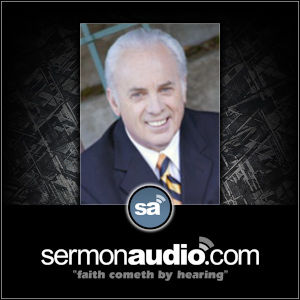The One True Catholic Church?
The One True Catholic Church?
Catholic Churches sui iuris
There are 23 Churches sui iuris (literally, ‘of their own law’, transliterated as ‘self-governing’ or ‘autonomous’) that, together, constitute the Catholic Church – 1 Western and 22 Eastern and Oriental Churches. All 23 are in communion with Rome, with the Latin Church being the most populous and well-known. In fact, many Catholics and non-Catholics alike are unaware of the Catholic Church in any manifestation other than that of its Latin or Western component.
(In answer to those who would query how 23 can be 1, and with no intent to trivialize the Mystery of the Trinity, I can only suggest reflecting on Saint Patrick’s example of the three-leaved shamrock.)
The 23 Churches, despite significant diversity in their liturgical praxis, spirituality, and other respects, as illustrated below, are in communion with one another and with the Pope. Although the manner in which their beliefs are expressed and understood differ in some instances, they also have a shared adherence to the teachings enunciated by the Magisterium.
Arguments can be made whether 22 is an accurate number as to the non-Western Churches, since:
- the long-term sede vacante status of some Churches begs the question as to whether they can realistically be termed sui iuris
- failure to designate a primatial hierarch has divided others into separate canonical entities that belie the fiction of being a single ecclesia
- one is, in fact, jurisdictionally sited within the Western Church.
I’ve made efforts to address (if not satisfactorily explain) these points hereafter, whether successfully or not is for the reader to judge.
Self-Governance in sui iuris Churches
This document evolved from a simple list of Rites and Churches created a few years ago, has been expanded several times by addition of pertinent information, and has had related texts merged with it to afford a fuller picture of the structure of Eastern and Oriental Catholicity. In all its iterations, editorial comment has been avoided in favor of factual presentation, leaving analysis, interpretation, and conclusions to the mind and imagination of the reader. However, this time, the compulsion to address the validity of terming Eastern & Oriental Catholic Churches as sui iuris has overtaken and vanquished self-restraint..
Patriarchal and Major-Archepiscopal Churches are, to an extent, self-governing. Within the so-called “historical territories” of the primatial hierarch of each of these Churches, the hierarch and synod have the power of governance, with only subtle differences between the two statuses.
In recent history, however, even the scope of authority accorded by the Eastern Code (CCEO) can and has been withheld by Rome from one such Church – the restrictions imposed on the Syro-Malabar Catholic Church during the first decade (1993-2003) of it being a Major Arch-Episcopate are the case on point. For the first five years of that period, the Church was denied decision-making authority as to matters liturgical (the sole power that all Patriarchs and Major-Archbishops routinely exercise even outside their circumscribed historical bounds). It was five years more before the Church was accorded the right to nominate hierarchs to canonical jurisdictions within the territory of the Major Arch-Episcopate.
When denominated to that status, barely more than a century had passed since appointment of the Church’s first indigenous hierarchs (1886); and only 80 years since a full hierarchical structure was established for it (1923). Thus, at the time, I rationalized that the Church, likely due to its numbers of 3.6 million faithful, had been selected to share the ecclesial status of the Ukrainian Greek-Catholic Church (UGCC), but lacked the centuries of operational experience that the UGCC brought to the table when it was accorded Major-Archepiscopal status.
In retrospect, it was remiss not to acknowledge that the internal turmoil surrounding liturgical praxis in the Syro-Malabar Church was not merely contributory to Rome’s decision, but causative as well. Such, however, begs the question – is it appropriate to thusly interfere, interject, or intervene in the day-to-day decision-making of an ecclesiathat is denominated as sui iuris and has just been canonically elevated to a status then accorded to only two Churches? On reflection, the answer is “no!” – the more so because centuries of ill-advised superintendence, exercised over the indigenous Church by transplanted hierarchs in the name of the Roman dicastries, was a significant factor in creating the situation that the imposed restrictions were intended to solve. (Notably, although beyond the scope of this discussion, Rome ultimately walked away from the matter, having accomplished little to nothing toward its resolution.)
Move outside the circumscribed bounds of historical territory and, this time by law, the powers of both hierarch and synod diminish significantly, effectively being reduced to those concerned with matters liturgical. In all other respects, those canonical entities of a sui iuris Church which are situated in the diaspora are exempt from the authority of the primatial hierarch and synod. Stand-alone parishes in the diaspora are subject to the local Latin Ordinary in almost all instances; the canonical jurisdictions are subject to the Oriental Congregation.
Is there a justification for this? Maybe once upon a time, when individual Churches were competing for bodies of faithful and jurisdictional authority over a given place. These days, the constituent population of each Church is effectively defined by tradition, with provisions in place to permit transfer of canonical enrollment for those whose spirituality or circumstances draw them to another Church. So, if there is justification, the argument is elusive, at the least. Is there even a coordinating role for Rome to play? I gave a lot of thought to that aspect, thinking about the clustering of multiple Sees in a single city and concluded, for a brief moment, “ahhh … there’s the need”, but then disabused myself of the notion. After all, presently, Rome does site canonical jurisdictions in the diaspora – has that resulted in a return to the canonical precept of “one city, one bishop”? Hardly, … Chicago boasts three; even Parma, not exactly a major metropolis, guests two – has it no suburbs?
Although, we’re no longer subjected to indignity the like of that inflicted on Saint Alexis Toth by Archbishop John Ireland or on Father John Wolansky, of blessed memory, by Archbishop John Ryan, certainly, having Rome at one’s shoulder or being physically situated in the jurisdictional bounds of your Latin brother hasn’t always been to the benefit of our Churches in the diaspora. Granted, if you were Bishop Justin (Najmy), of blessed memory, in process of establishing a Melkite Exarchate, the fraternal benevolence and generosity of the late Richard Cardinal Cushing was a boon, instrumental to your success.
If, on the other hand, you were Bishop Manuel (Batakian) and learned that the local Latin Cardinal Archbishop was closing the church which served as Cathedral of your Armenian Eparchy, with no offer of an alternative, you might justifiably feel less than blessed. While it cannot be argued that the latter situation would have been different under the direct omophor of the Armenian Patriarch, it is illustrative that direct supervision by the Oriental Congregation has no cachet attached and fraternity apparently has its bounds.
For Metropolitan and Eparchial Churches sui iuris, the situation as to self-governance marks sui iuris as that much more a contradiction in terms. While the primatial hierarch and Council of Hierarchs of a Metropolitan Church enjoy minor privileges, the hierarch of an Eparchial Church – even in its historical territory – exercises no more autonomy than does any local Ordinary of the Latin Church. The few Eparchies which have another jurisdiction attached have no authority over such. All such subordinate jurisdictions are Apostolic Exarchates and as such are responsible to him on whose behalf the Exarch acts; in this instance, that is the Apostolic See. Where is the self-governance? What does being sui iuris do for our Churches?
To my jaundiced eye, the totality of these facts and circumstances suggests that there is no Eastern or Oriental Catholic Church which can be truly described as sui iuris. Is it any wonder that our Orthodox brethren shake their heads in wonder as we trumpet our autonomous status? I think not.
Eastern & Oriental Catholic Churches
Historically, all of what are ordinarily termed Eastern and Oriental Catholic Churches (and the Eastern and Oriental Orthodox Churches from which almost all of them derive) were once part, with the Western Church, of a single Church that splintered through the centuries. The first division occurred subsequent to the Council of Ephesus, another after that of Chalcedon, and the third in a time-frame surrounding the so-called Great Schism of 1054 (the schism had its beginnings a century and a half prior and was not complete for as long thereafter). The specific events involved in the separation of these Churches from one another and with the Western Church, and the circumstances that led to some of their adherents reuniting with Rome, are far too involved for this discussion, which is intended primarily as a quick reference to the structure of the Eastern and Oriental Catholic Churches as they presently exist. A brief but excellent summary of the historical circumstances peculiar to each of the Churches, reasonably objective and free of polemics, is at The Eastern Christian Churches – A Brief Survey by Father Ron Roberson, CP, at the Catholic Near East Welfare Association (CNEWA) site.
Eastern and Oriental Catholic Churches, generally, represent bodies of faithful whose ancestors, at various points in history, entered into communion with Rome from Eastern or Oriental Orthodox Churches, effectively mending, for their part, the mutual schisms that occurred some centuries prior. Since these reunions were not corporate (i.e., none involved reunification in toto of a Church’s hierarchy, clergy, and faithful), there is a counterpart Eastern or Oriental Orthodox Church to every Eastern or Oriental Catholic Church except two – the Maronite Catholic Church and the Italo-Graeco-Albanian Byzantine Catholic Church.
The reason usually advanced as to why these two Churches have no counterpart among the Orthodox Churches is that neither was ever separated from the Church of Rome. However, the continuous communion of the Maronites is a matter of debate among historians. As regards the Italo-Graeco-Albanians, the reality of continuous communion is only true of the Church in its present form, an amalgamation of what were once three distinct ecclesial communities, two of which (Greek and Albanian) have Orthodox counterparts (the third – Italo-Byzantines – is no longer extant as a discernible ecclesia, its faithful having been subsumed into the Italo-Greek Church) .
Arguments are sometimes advanced that the Melkite Greek-Catholic and Syro-Malabarese Catholic Churches, among others, also never parted communion with Rome. In response to such claims (and similar ones have been advanced on behalf of various other Eastern and Oriental Catholic Churches), it may be that there were individual canonical jurisdictions (i.e., eparchies) or communities (e.g., parishes) of an Eastern or Oriental Church which remained in union with Rome, de facto, if not overtly. (Certainly, there are documented instances in which jurisdictions maintained dual communion with Rome and Constantinople). However, incontrovertible evidence to support continuous communion with Rome are not readily available or accessible. (In truth, all such claims are of little consequence, given that they are employed primarily as “one-upmanship” by thoses seeking to demonstrate that they are “more Catholic” than others.)
Classifying Eastern & Oriental Catholic Churches
There are multiple ways in which one might classify Eastern and Oriental Catholic Churches, but the most common are:
- Eastern versus Oriental
- Rite/Tradition/Rescension/Usage
- Ecclesial/Hierarchical Status
Eastern versus Oriental Catholic Churches
Churches that utilize the Byzantine Rite should technically be termed Eastern Catholic Churches, with most others properly referred to as Oriental Catholic Churches. This distinction mirrors that made between the two Orthodox Communions, i.e., those Orthodox Churches which serve the Divine Liturgy according to the Byzantine or Constantinoplian Rite are commonly termed Eastern Orthodox; those which serve it according to other Rites are ordinarily styled as Oriental Orthodox.
It should be noted, though, that the terms “Eastern” and “Oriental” are actually synonyms and this distinction is, therefore, artificial at best – and cannot readily be made in some languages – French, for instance. In fact, Eastern Catholic and Oriental Catholic are often employed interchangeably as umbrella terms, most commonly by the Vatican, to encompass all Catholic Churches sui iuris other than the Latin or Western Church.
My personal preference is in favor of making the distinction and I generally do so, although it is admittedly oft-times cumbersome and always verbose.
The Maronite Catholic Church, as a consequence of having no Orthodox counterpart, fails to fall neatly into either category – Eastern or Oriental. Similarly, Chaldean and Syro-Malabarese Catholic Churches can not be properly classified into either group, since their historical antecedent is the Assyrian Church of the East, which is of neither the Eastern or Oriental Orthodox communions. The tendency, in all three instances, is to include these Churches with the Oriental Catholic Churches, as they are not Byzantine but have historical and liturgical ties to Churches of the Antiochene Rite, which are classed as Oriental. To simplify an already complex discussion, I generally follow that rule (the list below is an exception to my usual practice, for relatively obvious reasons).
- Eastern Catholic Churches:
- Albanian Greek-Catholic Church
- Bielorussian Greek-Catholic Church
- Bulgarian Greek-Catholic Church
- Croatian Greek-Catholic Church
- Georgian Greek-Catholic Church
- Greek Byzantine Catholic Church
- Hungarian Greek-Catholic Church
- Italo-Graeco-Albanian Byzantine Catholic Church
- Melkite Greek-Catholic Church
- Romanian Greek-Catholic Church
- Russian Greek-Catholic Church
- Ruthenian Byzantine Catholic Church
- Slovak Greek-Catholic Church
- Ukrainian Greek-Catholic Church
- Oriental Catholic Churches:
- Armenian Catholic Church
- Coptic Catholic Church
- Ethiopian (& Eritrean) Catholic Church
- Syriac Catholic Church
- Syro-Malankara Catholic Church
- Other Non-Latin Catholic Churches:
- Chaldean Catholic Church
- Maronite Catholic Church
- Syro-Malabar Catholic Church
Rites
Note that this discussion addresses the historical development of Rites in relatively simple fashion. There is further history involved, but it is beyond the scope of what is hoped to be accomplished here, which is to make the reader aware of the different Rites and which Churches use them. The 22 Eastern and Oriental Catholic Churches use six different Rites among them. The largest number of Churches (14) use the Byzantine
Originally, there were three Rites – Latin, Alexandrean, and Antiochene; the Byzantine (or Constantinoplian) Rite was added thereafter. Rites arose from the customs and style of worship in what were then the four most important Christian centers, other than Jerusalem.
Differences among the Rites in liturgical language, rubrics, ritual, devotionals, prayers, liturgical and clerical vesture, etc., sprang initially from the fact that uniformity of praxis was impossible to maintain over time, as the number of clergy increased, local cultures and customs began to be woven into rituals, and both travel and communication were hampered by geography and the limited means available to make and maintain contact among churches and clerics.
Over time, those four Rites were modified or further developed as they were introduced into new regions. Some of these variations were so distinctive as to be deemed separate Rites, among these were the Maronite and Armenian Rites, which each developed in relative isolation because of geography. The result was that many authorities denoted the Maronite as a Rite unto itself; while others placed it within what was termed the West Syrian Tradition of the Antiochene Rite, from whence it had originated. As to the Armenian Rite, although acknowledged to have originated within the Byzantine Rite, it has long since been acknowledged as distinct. The Melkites originally served according to the Antiochene Rite but, as a consequence of coming under the influence of Constantinople, later adopted use of the Byzantine Rite.
Of late, Chaldean has been added to the list of Rites, being formally cited as such in the CCEO, although, historically, it had been classed in the East Syrian Tradition of the Antiochene Rite. I offer two theories to account for it being accorded as a Rite unto itself, with no basis to support either, other than my own personal musings on the matter:
- the change may relate to the unique aspect observed in the Liturgy of its counterpart Church, the Assyrian Church of the East, i.e., that there are no explicit Words of Institution in the Anaphora which they most commonly use (although that explanation is weakened by the fact that the Chaldeans themselves serve the Liturgy with explicit Words of Institution); or,
- it may reflect an intent on Rome’s part to have a Rite associated with each Patriarchate (this argument, however, is weakened by the fact that the Maronite is not delineated in the CCEO as a separate Rite, although many still consider it so – a premise that may change as it returns to its roots by being rid of the myriad latinizations which have accrued to it over the centuries)
My speculation as to why the Maronite is not cited in the CCEO as a distinct and separate Rite is that the need for the Maronites to recover their historical, traditional liturgical identity has, of necessity, caused them to look to their brethren of the Antiochene Rite. This will, assuredly, sacrifice some of the blended Antiochene and Latin praxis that has marked their liturgical style until now and will, in time, cause them to be more definitively denominated as Antiochene. For now, I have retained the older usage, designating it as a distinct
Church vs. Rite
For a long time, each group of Eastern Catholics was referred to by its name (most often reflective of its historical cultural/national identity or ethnic origin), followed by the word “Rite”. Thus, you would hear references to someone being of the “Ukrainian Rite” or to “Melkite Rite Catholics”. At the urging of the Eastern and Oriental Catholic hierarchs participating in the Second Vatican Council, particularly His Beatitude Maximos IV Saigh, Patriarch of Antioch & All the East, of Alexandria and of Jerusalem of the Greek-Melkites, of blessed memory, the Church recognized the status of the Eastern and Oriental Catholic Churches as sui iuris ecclesial entities, each of which uses a particular Rite. Thus, it is a disparagement (as well as inaccurate) to substitute “Rite” for “Church” in the name of any of these bodies.
The distinction is made in Canons 27 and 28 of the Eastern Code of Canon Law:
Canon 27
- A group of Christian faithful united by a hierarchy, according to the norm of law, which the supreme authority of the Church, expressly or tacitly, recognizes as sui iuris, is called in this Code a Church sui iuris.
Canon 28
- 1. A Rite is the liturgical, theological, spiritual, and disciplinary patrimony, culture, and circumstances of history of a distinct people, by which its own manner of living the faith is manifested in each Church sui iuris.
Beyond the codified definition of “Rite”, it should be further understood to be the collected liturgical patrimony or heritage by which a body of faithful conduct their religious life. It is more than just differences in language, culture, and vesture, although those are often among the most immediately obvious distinctions. It’s often thought of as strictly applicable to liturgical worship service; it actually includes the totality of a people’s religious expression, including their sacraments, sacramentals, devotionals, prayers, music, and even aspects of their religious artistic expression and ecclesial architecture.
Interestingly, in the West, persons belong to a Rite and Rites to a Church (which uses more than a single Rite). In the East, persons belong to a Church and the Church (in some instances, more than a single Church) to a Rite. (In the cases of the Armenian, and Maronite Rites, each Rite is used by only a single Church sui iuris and, in both of these instances, the Church’s name and that of the Rite are identical.)
By way of example:
- most Western Catholics belong to the Latin Rite with smaller numbers adhering to the Ambrosian, Bragan, and Mozarabic Rites, all of which Rites belong to the Latin Church; while,
- some Eastern Catholics belong to the Melkite Church, which (with 13 other Churches) uses the Byzantine Rite.
Rites, the delineations within each (e.g., Traditions, Rescensions, and Usages) and the jurisdictional considerations which affect those, have been used to illustrate the functional structure of Eastern and Oriental Catholic Churches as applied to liturgical praxis.
Tradition, Rescension, Usage
Tradition is a distinction within a Rite that principally reflects variations of culture, sometimes including ecclesial language. Within some Traditions, there are also what are styled Rescensions.
Rescension is a distinction in characteristics of the form of worship that is unique to one or more of the Churches or their constituent canonical jurisdictions that follow a particular Tradition (or, in some instances, a particular Rite in which there is no intervening break-down by Tradition). Note that, historically, “Recension” has been a term used in conjunction with Liturgy only as to the Ruthenians; however, there remains a level of distinction in the praxis of some of the Churches which falls beneath that of Tradition, but is more than a Usage. So, Rescension it will be, unless/until someone offers me a better choice by which to term the differentiation.
Church is a sui iuris body of faithful which worships according to a particular Rite.
Usage is a term that ordinarily denotes limited, localized differences within a Church itself (as opposed to a Rescension, which generally occurs at the level of Rite or Tradition). Although employed in the Latin Church {e.g., the Anglican Usage), to the best of my knowledge, it is not anywhere officially applied to any of the Eastern or Oriental Churches. However, in my opinion, it is the most logical term to describe liturgical praxis that accommodates specific, localized variations in language and/or ceremony. I’ve qualified these by whatever jurisdictional limits are known to be applicable to the Usage.
Jurisdiction indicates a canonical entity within a Church. Jurisdictions are listed in either of the following instances (in some cases, both considerations apply):
- When none of two or more jurisdictions in a Church has been designated as its primatial See (e.g., as is the case with the Italo-Graeco-Albanian Byzantine Catholic Church), each of the jurisdictions comprising the Church is listed; or,
- When some distinctive consideration (i.e., Tradition, Rescension, Usage) is either applicable to or excludes one or more specific jurisdictions (e.g., a metropolia) within a Church from the praxis of the Church as a whole, the relevant jurisdictions are cited.
Dependent Jurisdiction further defines the canonical entity or entities (e.g., an eparchy within a metropolia) to which application of a praxis factor (i.e., Tradition, Rescension, Usage) is limited or from which it is excluded.
Jurisdictional Limitations narrow, yet further, the canonical entity or entities (e.g., a parish within an eparchy) to which application of a praxis factor is limited or from which it is excluded.
Special Circumstances document unique considerations applicable to a Church or certain of its jurisdictions. As examples, these might include:
- That one or more of a Church’s jurisdictions canonically serve a discrete ethnic or national sub-group within that Church, albeit there is not a distinct Tradition, Rescension, or Usage involved in doing so.
- That one or more of a Church’s jurisdictions have designated pastoral responsibility for the faithful of another Church;
- That some or all of a Church’s pastoral entities (i.e., parishes or missions) are subject to the canonical authority of another Church
- That some or all of a Church‘s jurisdictions are suppressed de facto, albeit not de jure.
That a Church has or does not have canonical jurisdictions in the diaspora is not routinely noted. In instances where such is documented, it was for the purpose of recording some particular fact. (Admittedly, there are also some relatively trivial details reported as to some Churches or jurisdictions. The purpose in that was to assure that information of a principally nostalgic nature, not uncommonly disregarded in formal histories, was recorded somewhere, for whatever it is worth.)
The schematic is intended as a self-explanatory, quick reference to the praxis of Eastern and Oriental Catholic Churches. Over time, detail has been added because it seemed important to do so or in response to repeated requests for its inclusion. Such detail has created, in turn, the need for yet more information, requiring explanatory notes in some instances and making it increasingly difficult for the schematic to be a stand-alone document. To assure clarity, while attempting to maintain the integrity of the schematic, the notes have been added at the end.
The outline of the schematic is generally as follows. (Every effort has been made to avoid or minimize instances in which the breakout deviates from this because of the intervention of peculiar circumstances, requiring more levels of detail. But, it’s not for nothing that many of us are called “byzantine”):
- Rite
- Tradition
- Rescension
- Church
- Usage
- Jurisdiction
- Jurisdictional Limits-1
- Jurisdictional Limits-2
- Special Circumstances
- Jurisdictional Limits-2
- Jurisdictional Limits-1
- Jurisdiction
- Usage
- Church
- Rescension
- Tradition
SOURCE: Eastern & Oriental Catholic Churches & Rites




















Leave a Reply
You must be logged in to post a comment.